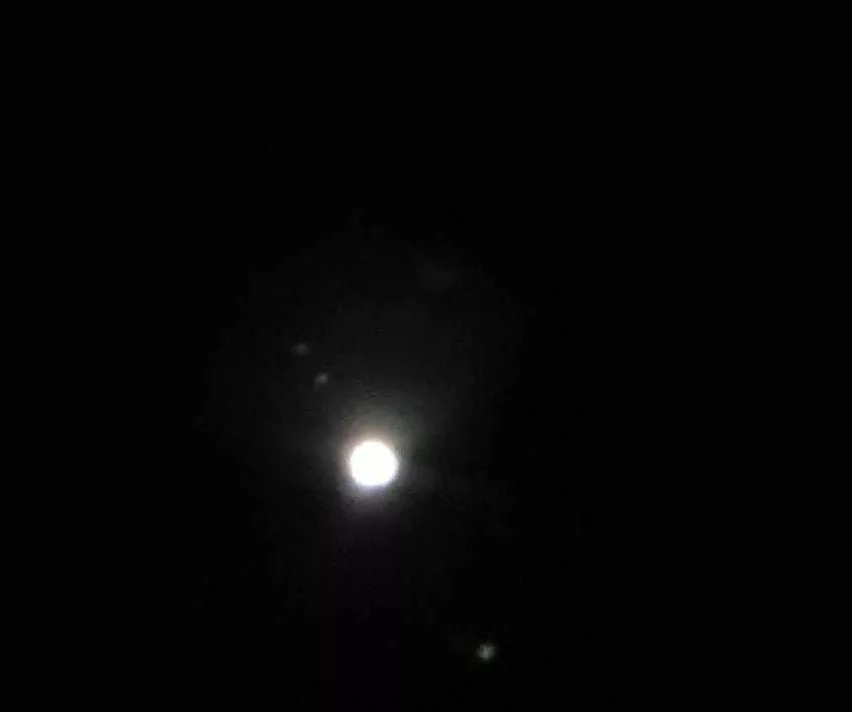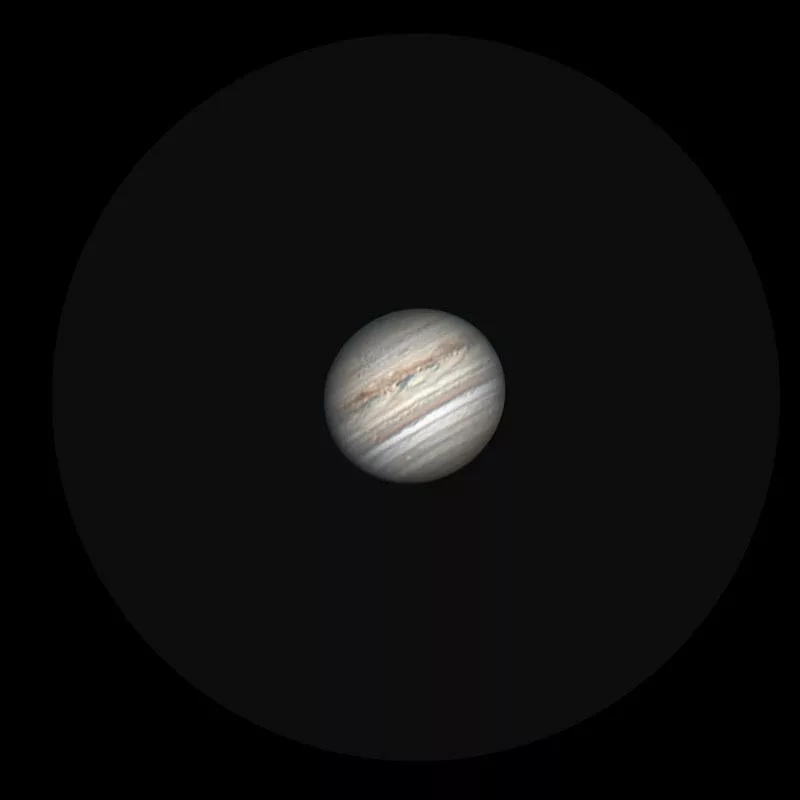Why Can I Only See White Through My Telescope?
Have you ever excitedly peered through your telescope, expecting a spectacular view of celestial wonders, only to be greeted by a baffling, uniform white field? This experience, while perplexing and sometimes frustrating, is a common hurdle in the journey of amateur astronomy. Many enthusiasts, from beginners to the more experienced, have encountered this phenomenon at some point.
The good news is that seeing only white through a telescope is typically not indicative of a defect or serious malfunction. Instead, it’s often a result of certain easily correctable factors related to the telescope’s setup, alignment, or viewing conditions. Understanding these factors is key to resolving the issue and unlocking the full potential of your telescope.

In this article, we’ll explore the various reasons why your telescope might be showing only a white image and provide you with a step-by-step guide to troubleshoot and fix this issue. Whether it’s a matter of adjusting the focus, aligning the optics correctly, or simply understanding the limitations of your equipment, we’re here to reassure you that with a little patience and the right knowledge, you’ll soon be back to exploring the wonders of the night sky. Let’s demystify this common telescope conundrum and set you on the path to clear, vibrant astronomical observations.
Understanding Telescope Optics
Basic Explanation of How Telescopes Work:
Telescopes are fascinating instruments that have the power to bring distant celestial objects closer to our eyes. At their core, telescopes work by gathering light and bringing it to a focus, where it forms an image. The main components responsible for this are the lenses in refractor telescopes or mirrors in reflector telescopes. These components bend or reflect light rays, magnifying distant objects and making them visible to the observer.
Importance of Proper Alignment and Focus:
The alignment and focus of a telescope are crucial for achieving clear and detailed observations. Misalignment in the optics can lead to a variety of issues, including the common problem of seeing only a white or blurred image. Proper alignment ensures that the light entering the telescope is accurately focused, allowing for sharp and clear images of stars, planets, and other celestial bodies.
Focus, on the other hand, is about adjusting the distance between the eyepiece and the telescope’s primary lens or mirror. This adjustment is essential to bring the image to a sharp point on the retina of your eye. Without proper focus, objects can appear blurry, out of shape, or in some cases, just a white haze. Understanding and mastering these two aspects of telescope optics are fundamental steps for any astronomy enthusiast to enjoy successful stargazing sessions.
Common Reasons for White Images
Causes of White Images in Telescopes
| Cause | Description |
|---|---|
| Overexposure due to too much light | Occurs when the telescope is directed towards an extremely bright source, like the sun, without adequate filtering. This can overwhelm the telescope’s optics, leading to a washed-out, white image. |
| Incorrect focus settings | Happens when the focus is not properly adjusted, causing the light to scatter instead of forming a clear image. This scattering can manifest as a featureless white field in the eyepiece. |
| Misaligned optics | Results from the primary and secondary mirrors (in reflector telescopes) or lenses (in refractors) not being properly aligned. This misalignment can disrupt the path of light, leading to a diffuse, white glow instead of a distinct image. |
| Viewing bright objects without proper filters | Specifically an issue when observing the moon or planets that reflect a lot of sunlight. Without the right filters to reduce brightness, these objects can appear as bright white spots, lacking detail. |
Understanding these common causes can help telescope users troubleshoot and resolve the issue of seeing only white through their telescope. Proper setup, alignment, and use of accessories like filters are key to enjoying clear and detailed views of celestial wonders.
Step-by-Step Troubleshooting Guide
Troubleshooting Steps for White Images
| Step | Action |
|---|---|
| Step 1: Adjust the Focus Slowly | Begin by slowly turning the focus knob in both directions. A gradual adjustment can often resolve issues of over or under focusing that result in a white image. |
| Step 2: Check for and Correct Any Misalignment | Inspect and realign your telescope’s optics. For reflector telescopes, this means checking the alignment of the mirrors. For refractors, ensure the lenses are properly seated. |
| Step 3: Modify Exposure Settings (if applicable) | If your telescope has an electronic viewfinder or is connected to a camera, adjust the exposure settings. Decreasing exposure can help if the white image is due to overexposure to light. |
| Step 4: Ensure Proper Use of Filters for Bright Objects | When observing very bright objects like the Moon or planets, use appropriate filters. These filters can reduce glare and prevent the overwhelming white light that obscures details. |
Following these steps can help resolve the issue of seeing only white through the telescope, allowing for a more enjoyable and successful stargazing experience. Remember, patience and careful adjustments are key in the world of astronomy.

Preventative Measures
In this section, we’ll explore practical tips and strategies to prevent the common issue of seeing only white through your telescope. Regular maintenance and correct setup play a crucial role in ensuring clear and detailed observations.
Preventative Tips:
- Regular Optic Cleaning: Dust and smudges on the lenses or mirrors can scatter light, leading to a washed-out view. Clean your telescope’s optics gently and regularly using appropriate cleaning materials.
- Proper Alignment: Ensure your telescope is correctly aligned each time you set it up. For reflector telescopes, regular collimation (alignment of mirrors) is crucial. Refractor users should check that lenses are properly seated.
- Appropriate Focus Adjustment: Familiarize yourself with your telescope’s focusing mechanism. Practice achieving sharp focus during daylight hours on distant objects to get a feel for the focus range.
- Use of Correct Eyepieces: Different eyepieces offer varying magnifications and fields of view. Using an eyepiece with too high magnification in low light conditions can result in a white, featureless image.
- Proper Exposure Settings for Electronic Aids: If using a digital camera or electronic viewfinder, learn to adjust exposure settings correctly. Overexposure can lead to a completely white image.
- Filter Application: Utilize filters appropriately, especially when observing bright objects like the Moon or planets. Filters can reduce glare and improve contrast.
- Avoiding Light Pollution: Observing in areas with high light pollution can affect the quality of the image. Try to find darker observation sites for better results.
- Temperature Acclimation: Allow your telescope to acclimate to the outside temperature before use, as drastic temperature differences can cause issues with optics and viewing.
By following these preventative measures, you can significantly reduce the chances of encountering a white, featureless view through your telescope, leading to a more rewarding stargazing experience.
FAQ Section:
In this section, we address some of the most frequently asked questions related to the issue of seeing only white through a telescope. These answers aim to provide quick, informative insights to help amateur astronomers and stargazers.
Q: Why does everything look white when I look through my telescope?
A: This is often due to overexposure, incorrect focus, or misaligned optics. Adjusting the focus and ensuring proper alignment can usually resolve this issue.
Q: Can improper eyepiece selection cause a white view?
A: Yes, using an eyepiece with too high magnification or not suited for your telescope’s specifications can result in a white, featureless image.
Q: How do filters affect what I see through my telescope?
A: Filters can reduce glare and improve contrast, especially when observing bright objects like the Moon or planets. Not using them when needed can lead to overexposed, white views.
Q: Does light pollution affect telescope viewing?
A: Absolutely. Light pollution can wash out the contrast in the night sky, leading to less distinct or white views through the telescope.
Q: How can I tell if my telescope is misaligned?
A: A misaligned telescope often results in blurry or white images. Regular collimation (for reflector telescopes) and checking lens alignment (for refractors) are essential.
Q: Is it normal for a new telescope to show only white images?
A: It’s not uncommon for beginners to experience this due to setup errors. Ensure proper assembly, alignment, and focus adjustments.
Q: Can extreme temperatures affect my telescope’s performance?
A: Yes, extreme cold or heat can affect the telescope’s optics and mechanical parts, potentially leading to poor viewing experiences.
Q: Should I clean my telescope’s lens if I see only white?
A: Before cleaning, check for other issues like focus and alignment. If these are fine, then a gentle cleaning might be necessary.
Q: How important is the focus knob adjustment?
A: Very important. Incorrect focus knob adjustment is a common reason for not seeing clear images. Practice adjusting it for the best results.
Q: Can a damaged telescope mirror or lens cause white views?
A: Yes, damage to the optics can scatter light and affect the image quality. If you suspect damage, consult with a professional for repair or replacement.
Conclusion:
In this article, we’ve explored the common issue of seeing only white through a telescope, a challenge that many amateur astronomers and stargazers encounter. We’ve delved into the basics of telescope optics, identified common reasons for this phenomenon, and provided a comprehensive step-by-step troubleshooting guide. Additionally, we’ve offered preventative measures to avoid this issue and answered frequently asked questions to further aid in your astronomical explorations.
Remember, encountering challenges like this is a normal part of the learning process in astronomy. Each obstacle is an opportunity to deepen your understanding of your equipment and the night sky. Don’t hesitate to experiment with different settings and configurations to find what works best for your specific telescope and viewing conditions. And if you find yourself needing more assistance, the astronomy community is a fantastic resource, full of experienced individuals who are often more than willing to help.
Astronomy is a journey of continuous learning and discovery. Embrace each challenge as a step towards becoming a more skilled and knowledgeable stargazer. With patience, practice, and the right approach, the wonders of the universe are within your reach. Happy stargazing!
Additional Resources:
Navigating the world of astronomy can be as vast and complex as the night sky itself. To assist you in this journey, we’ve compiled a list of invaluable resources that cover detailed guides on telescope maintenance, use, and a selection of forums and online communities where you can connect with fellow astronomy enthusiasts.
- Telescope Maintenance Guides:
- Telescope Usage and Tips:
- Online Forums and Communities:
- Cloudy Nights Forum: A community of amateur astronomers sharing experiences, tips, and observations.
- Stargazers Lounge: A friendly forum for discussing all aspects of astronomy and stargazing.
- Reddit’s r/Astronomy: A subreddit dedicated to all things astronomy, perfect for beginners and experts alike.
- Social Media Groups:
- Facebook Groups like Amateur Astronomy and Backyard Astronomy are great for connecting with other enthusiasts, sharing photos, and getting advice.
- Instagram and Twitter also host a vibrant community of astronomy lovers. Follow hashtags like #Astronomy and #TelescopeTips for regular updates and insights.
These resources are designed to enhance your understanding and enjoyment of astronomy. Whether you’re troubleshooting an issue with your telescope, looking for maintenance tips, or seeking to connect with like-minded individuals, these links offer a wealth of information and community support. Embrace the vastness of the cosmos with confidence and curiosity!
